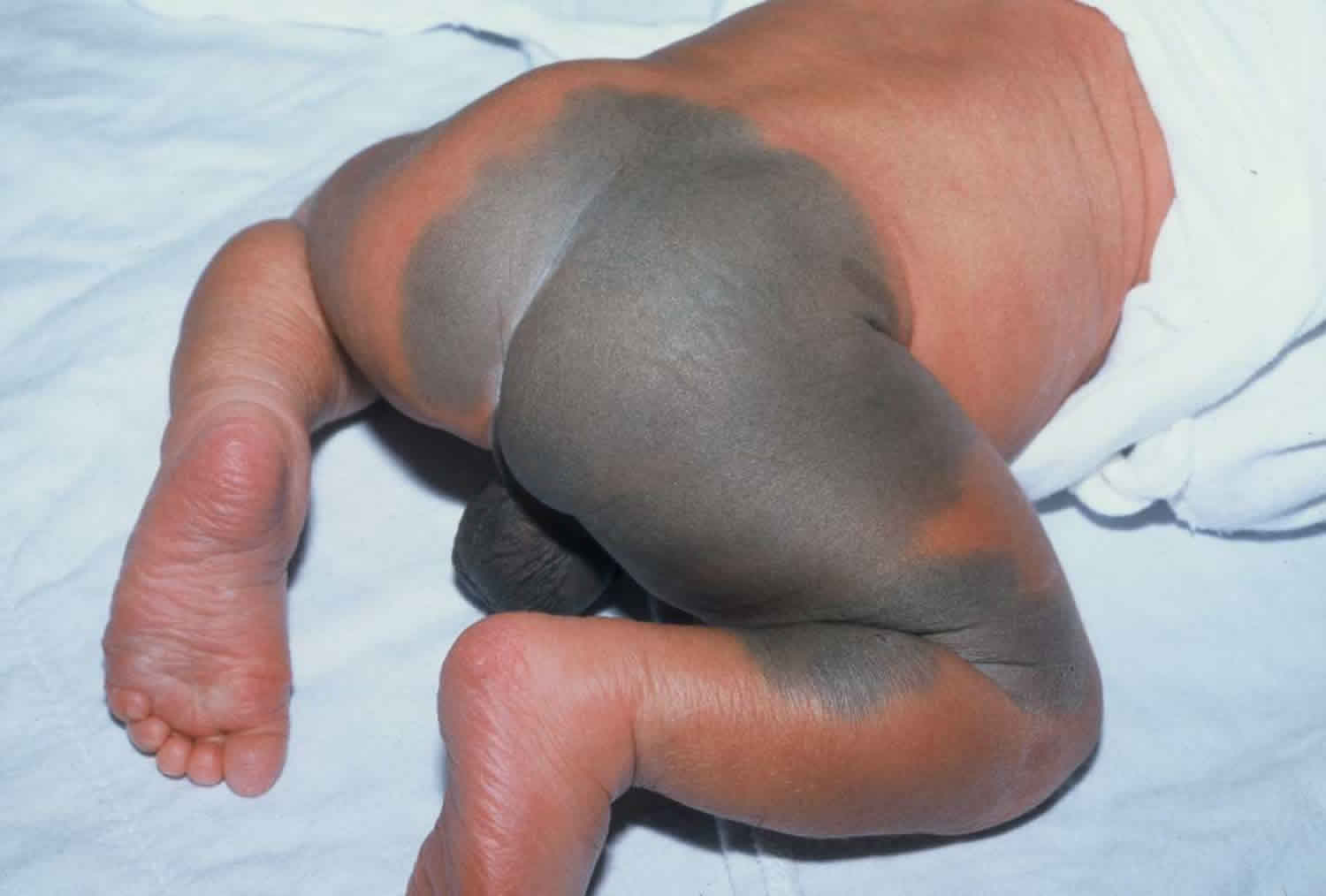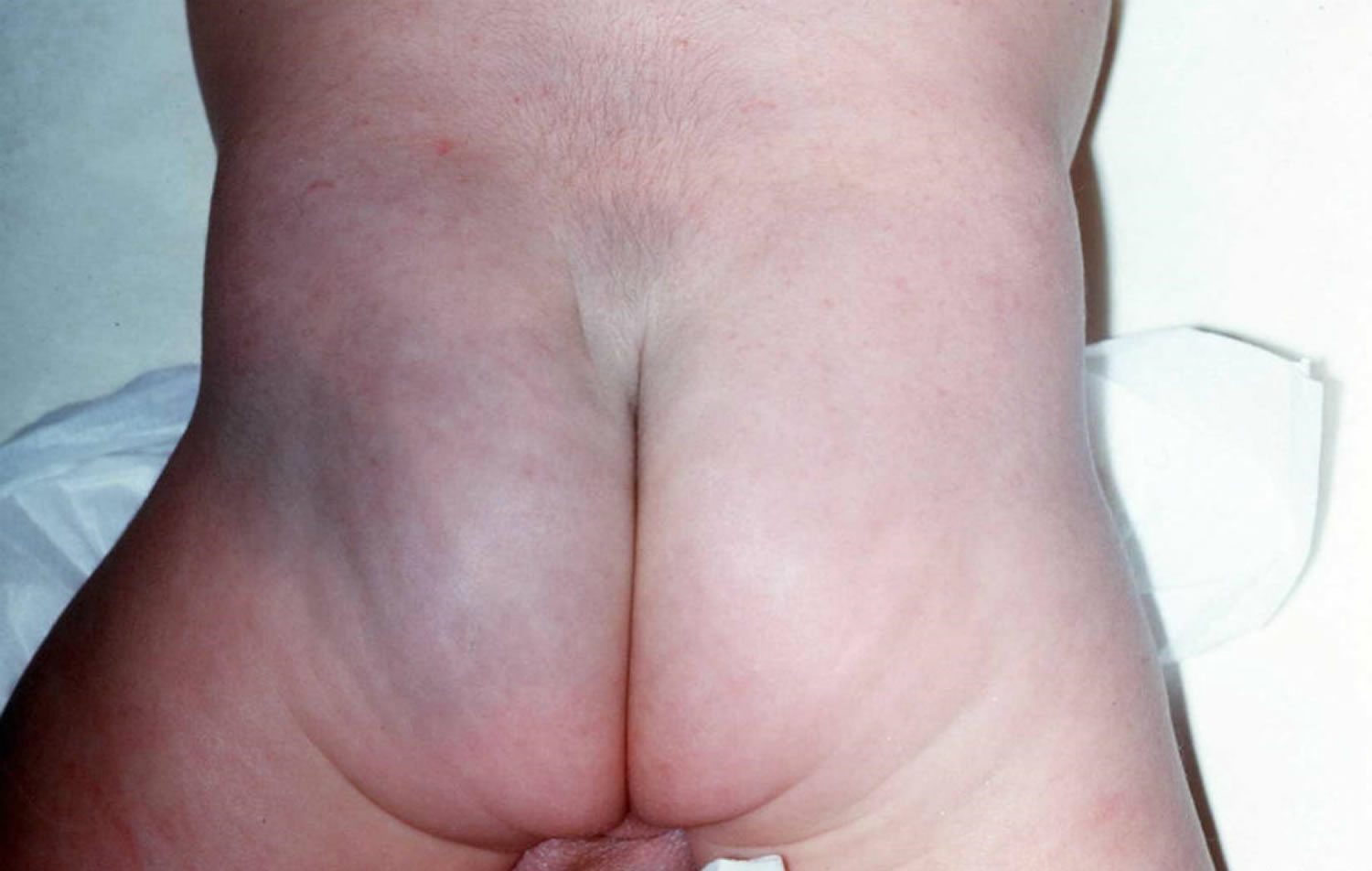Contents
What is a Mongolian spot
Mongolian spot is also called blue-gray spot, is a large flat lesion that are usually found on the lower back or buttocks of infants at birth. Mongolian spot is the most common type of birthmark. Mongolian spot can occasionally be found on the legs or shoulders of infants, but this is less common. The color of Mongolian spot ranges from deep brown to slate gray or blue-black. Mongolian spot is caused by collections of pigment-producing cells (melanocytes) located in a deeper layer in the skin.
Mongolian spots are seen in approximately 90% of African Americans and Native Americans, roughly 80% of Asians, 70% of Hispanics, and between 5–10% of whites. Generally, male and female infants are equally affected, although some studies suggest a slightly higher incidence of these birthmarks in males. Additionally, full-term infants are more likely to have blue-gray spots than preterm infants.
The blue or black or slate-brown coloring found in Mongolian spots results from dermal melanocytosis – the presence of functional melanocytes in the dermis. These cells have failed to reach their proper location in the basal layer of the epidermis during embryonic migration from the neural crest.
Mongolian spot is harmless and there is no treatment required for Mongolian spots, because they naturally fade within the first years of life. Usually the discoloration spontaneously disappears by the time the child reaches 4 years old. In very rare cases, Mongolian spot persists into school age years and even into adulthood.
Once the diagnosis of a Mongolian spot is made, there is essentially nothing to do except observe the spot over time and wait for resolution. If the Mongolian spot does not fade within the first years of life, see your child’s physician. Additionally, because this birthmark appears similarly to bruises, if you have any questions about whether or not it was present at birth, it is best to seek medical care.
Figure 1. Mongolian spot baby
Mongolian spot cause
Mongolian spot is thought to be due to entrapment of melanocytes (pigment cells) in the dermis of the developing embryo, when the cells have failed to reach their proper location in the epidermis.
The patches are present at birth and occur in more than 90% of children of Mongoloid race (e.g. East Asians, Polynesians, Indonesians, Micronesians). Mongolian spots occur less frequently in other races.
Mongolian spot signs and symptoms
Mongolian spots may be single or multiple, and they range in size from a few millimeters to 10 centimeters or more in diameter. They are present at birth and, due to their appearance, can be confused for a bruise.
Mongolian spot distribution
- Lumbo-sacral region
- Extra-sacral lesions (occasionally)
Mongolian spot morphology
- Poorly circumscribed patches of blue/black or slate-brown pigmentation
- Size: vary from a few centimeters to being very extensive
Mongolian spot treatment
There is no therapy or treatment for Mongolian spot in infants because it is a harmless condition that should resolve on its own. However, large and numerous Mongolian spots that persist after a year of life may be associated with rare genetic disorders in a very small number of cases. If there is a strong family history of genetic disorders along with Mongolian spot, the child’s physician may decide to send blood to the lab to test for specific genetic diseases, which each have their own specific treatments.






